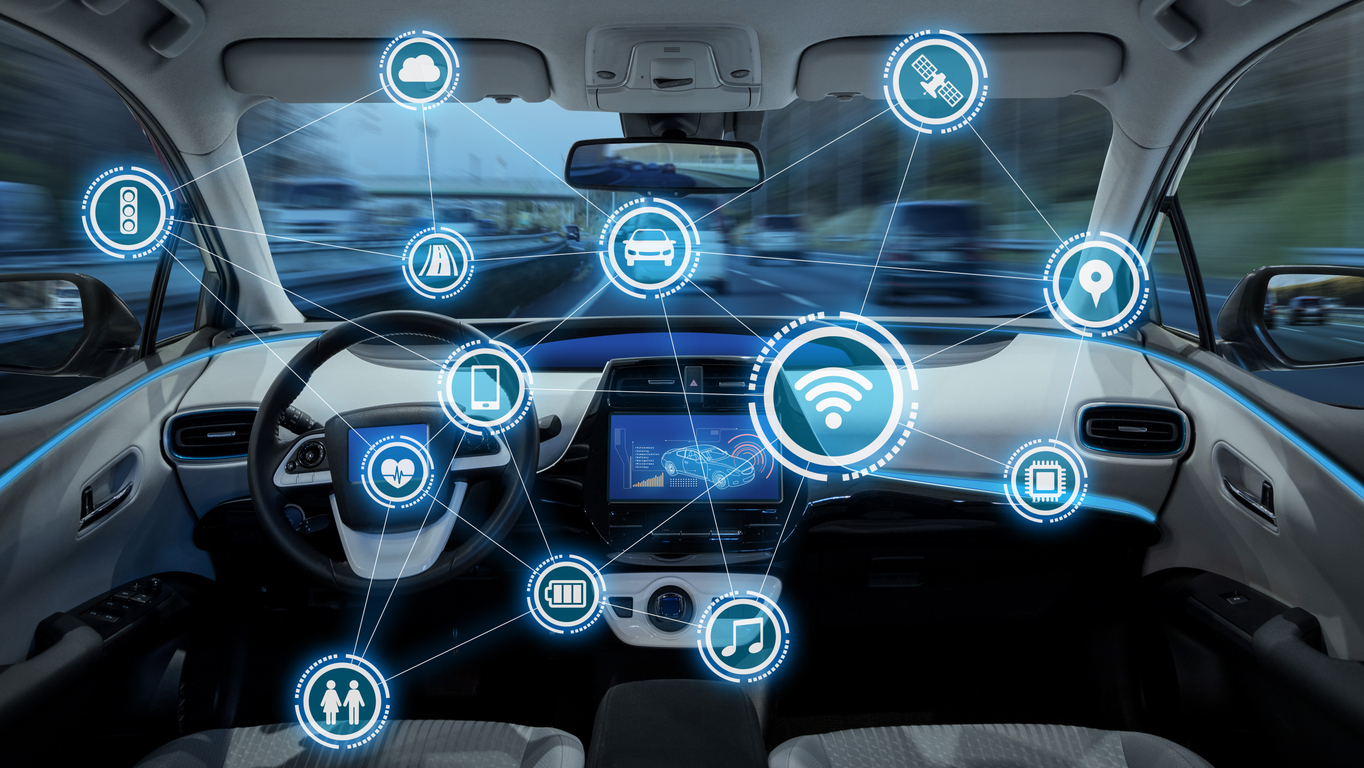Automotive manufacturers face ever-evolving political and technological landscapes that make staying “ahead of the curve” essential not only to success but also to survival. A key way they can do this is by embracing and taking full advantage of the latest tools and techs that enable efficiency and productivity.
Enter the digital twin, a groundbreaking technology that’s revolutionizing how vehicles are designed, built, and maintained. But what exactly is a digital twin, and why is it causing such a stir in the automotive industry?
Read on to explore what digital twins are and how they are driving real-world innovation in the automotive market.
Table Of Contents
What is a Digital Twin?
A digital twin is essentially a virtual replica of a physical product or system. In the automotive world, this means creating a highly detailed, data-driven model of a vehicle that can be used to simulate, analyze, and optimize various aspects of its design and performance.
Think of it as a super-advanced version of those 3D models you might see in car commercials, but with one crucial difference: digital twins are constantly updated with real-world data, allowing them to evolve and improve over time.
The Rise of Digital Twins in Automotive
The adoption of digital twin technology in the automotive sector has been nothing short of remarkable. According to recent market research, the digital twin industry is expected to reach a staggering $73.5 billion by 2027, with automotive applications driving a significant portion of this growth.
Why the sudden surge? Well, as vehicles become increasingly complex and software-dependent, traditional design and testing methods are struggling to keep up. Digital twins offer a way to navigate this complexity, enabling manufacturers to innovate faster and more efficiently than ever before.
Revolutionizing the Design Process
One of the most significant impacts of digital twins is in the realm of vehicle design. Traditionally, creating a new car model involved countless physical prototypes and time-consuming real-world tests. With digital twins, much of this process can be virtualized, leading to some impressive results:
- Reduced design time: Renault, for example, has reported that digital twin technology has helped them slash the time required to design a new vehicle by a quarter – that’s an entire year saved in the development process4.
- Enhanced decision-making: Digital twins allow designers to quickly test different configurations, materials, and components in a virtual environment. This facilitates better decision-making early in the design phase, saving both time and resources.
- Improved sustainability: By reducing the need for physical prototypes, digital twins help minimize material waste and energy consumption in the design process.
Supercharging Manufacturing and Quality Control
The benefits of digital twins extend well beyond the design studio. On the factory floor, this technology is transforming how vehicles are manufactured and quality-checked:
Optimized Production Lines
Digital twins allow manufacturers to create virtual models of their entire production lines. This enables them to:
- Simulate and optimize workflows before implementing changes in the real world
- Identify potential bottlenecks or inefficiencies
- Train staff in a risk-free virtual environment
Predictive Maintenance
Predictive maintenance, also known as preventative maintenance, proactively focuses on regular inspection, maintenance, and repairs to prevent equipment failures, minimize downtime, and extend asset lifespans. By continuously analyzing data from sensors on real vehicles, digital twins can support predictive maintenance by predicting when components are likely to fail. This allows manufacturers and service centers to perform maintenance proactively, reducing downtime and improving vehicle reliability3.
Enhanced Customer Experience
Digital twins aren’t just changing how cars are made – they’re also revolutionizing the ownership experience:
Personalized Services
Creating a digital twin of all cars sold allows car manufacturers to monitor each vehicle’s performance in real time, enabling personalized services and proactive maintenance2.
Over-the-Air Updates
Digital twins facilitate seamless over-the-air software updates, allowing manufacturers to continuously improve vehicle performance and add new features long after the car has left the showroom.
Challenges and Future Prospects
While the potential of digital twins in the automotive industry is immense, there are challenges to overcome:
- Data management: Digital twins generate vast amounts of data, requiring robust infrastructure and analytics capabilities. This can create real-time fragility, leading to costly unplanned downtime.
- Cybersecurity: As vehicles become more connected, ensuring the security of digital twin systems is paramount.
- Standardization: The industry needs to develop common standards to ensure interoperability between different digital twin platforms.
Despite these challenges, the future looks bright for digital twins in the automotive sector. As artificial intelligence and machine learning capabilities continue to advance, we can expect digital twins to become even more sophisticated and integral to the automotive development process.
Conclusion
Digital twins are more than just a buzzword – they’re a transformative technology that’s reshaping the automotive industry from the ground up. By bridging the gap between the physical and digital worlds, they’re enabling faster innovation, improved efficiency, and enhanced customer experiences.
As we look to the future of mobility, one thing is clear: digital twins will play a crucial role in driving the automotive industry forward. Whether you’re a car enthusiast, an industry professional, or simply someone interested in cutting-edge technology, the evolution of digital twins in the automotive industry is certainly something to watch.
Learn how Volt supports digital twin technology in the automotive industry with our new joint report from Berg Insights:




